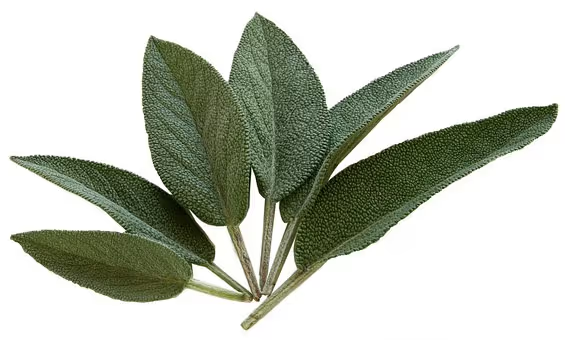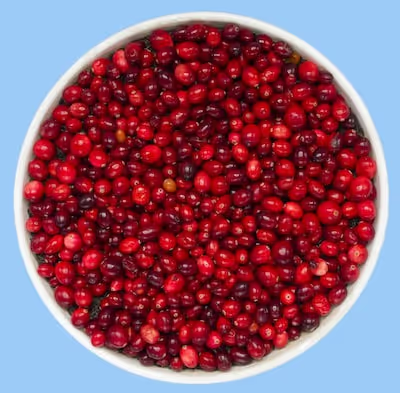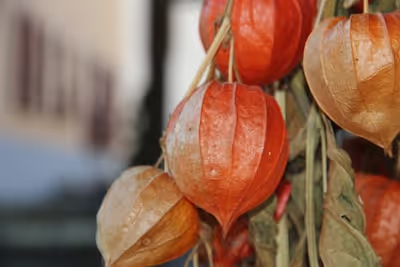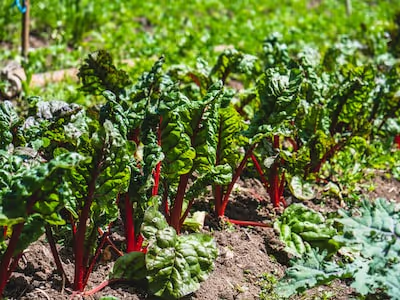Growing Water Spinach at Home for Fresh Leafy Greens

Growing Water Spinach
Ready to start growing water spinach? Begin by soaking seeds overnight, then plant in rich, moist soil where sunlight generously flows. Harvest tender shoots within weeks, savoring this fast-growing Asian green's vibrant crunch and delicate flavor. Simple to cultivate and satisfyingly tasty, water spinach rewards your gardening hustle—keep reading to grow it right.
Cheatsheet: Quick Guide to Home Water Spinach Success
🌞 Site & Temperature
- Full sun thrives best (6+ hrs/day)
- Soil temp: 75-95°F (24-35°C)
- Frost kills; plant after last frost
💧 Soil & Water
- Use rich, loamy soil; pH 6.5-7.5
- Keep constantly moist or grow in shallow water
- Mulch helps retain moisture
🌱 Planting Methods
- Start with seeds or stem cuttings
- Plant seeds 1/4 inch (0.5 cm) deep, 3 in (8 cm) apart
- Cuttings root in water within 7 days
- Transplant when 4-6 in (10-15 cm) tall
🌿 Care & Feeding
- Fertilize every 2 weeks (organic compost or diluted fish emulsion)
- Pinch tips for bushy growth
- Watch for aphids; spray with water if needed
✂️ Harvest & Regrow
- Harvest 4-6 weeks after sowing
- Cut stems above a node; new shoots regrow fast
- Up to 8 harvests per season
🛠 Tools and Products You'll Need
- Water spinach seeds or fresh stems
- Rich organic soil or compost
- Garden trowel
- Shallow container or raised bed
- Pruners or sharp scissors
- Mulch
- Starter fertilizer
🌱 Nutrition & Self-Sufficiency
High in vitamin A, C, iron, calcium. Up to 80% water content. Fast, sustainable supply of leafy greens for soups, salads, stir-fries.
Growing Water Spinach at Home for Fresh Leafy Greens
What is Water Spinach?
Water spinach (Ipomoea aquatica) packs vigor and flavor in equal measure. Known as kangkong, ong choy, or rau muống, this semi-aquatic vine has fed generations across Southeast Asia. It tastes like a cross between spinach and morning glory, with hollow stems built for stir-frying.
Technically, it’s not true spinach, but the leaves and stems behave like spinach in the kitchen.
Why Grow Water Spinach?
Few greens grow as quickly or as generously in summer heat. With the right conditions, I’ve harvested baskets of young shoots within three weeks from seed.
The USDA calls water spinach an "excellent source of vitamin A, C, and iron" (USDA Nutrient Database). This makes it a nutrition powerhouse for the home garden. Plus, it’s nearly impossible to find truly fresh water spinach at most supermarkets outside of major cities.
Requirements: Sun, Water, Space
- Sunlight: Full sun (6+ hours daily). Tolerates partial shade, but you’ll get skinny, leggy growth.
- Soil: Prefers rich, loamy soil with excellent drainage. I mix in plenty of compost and worm castings.
- Moisture: Water spinach loves wet feet. Keep soil consistently damp, but avoid soggy mud. Some gardeners grow it in shallow water or in containers with no drainage holes.
- Temperature: Thrives in warmth—ideal germination and growth between 75°F-95°F (24°C-35°C).
Starting Water Spinach from Seeds or Cuttings
Seeds
Sow seeds outdoors only after the soil warms up past 70°F (21°C). Soak seeds overnight—those hard shells need a little convincing. Plant 1/2 inch (1.2 cm) deep. I typically see sprouts in 4–7 days.
Cuttings
If you get your hands on fresh water spinach stems, cut just below a node and root them in water. Place cuttings in a jar and watch for white roots within a week. Transplant into garden beds or containers when roots reach an inch (2.5 cm) long.
Caring for Water Spinach: Tricks from the Field
Young plants need more water than you assume. I water container-grown plants twice daily during hot spells. Mulch helps retain moisture and keeps soil cool.
Pinch back growing tips to encourage bushier, tenderer growth. Remove flower buds as they appear, unless you want to collect seeds for next season.
Fertilize every three weeks with fish emulsion or a balanced organic liquid feed. Water spinach responds to nitrogen, but don’t overdo it or you’ll get lush leaves with little flavor.
Pest and Disease Management
Aphids and flea beetles sometimes take a liking to water spinach. I blast them off with a strong jet of water or use neem oil as a last resort.
Clubroot and leaf spot can show up in waterlogged or overcrowded beds. Rotate crops and avoid planting in the same spot more than once every two years.
Harvesting for Peak Flavor
Harvest when stems reach 8–12 inches (20–30 cm) in length. Snip just above a node; new branches will form from the cut site.
Tender tips taste best. I cut small bundles every 3–5 days through the summer. Water spinach goes from seed to salad bowl in under a month in peak weather.
"Water spinach can double in size every 3 days under ideal conditions." (FAO, 2003)
Growing Water Spinach in Containers
City gardeners, rejoice. Water spinach thrives in buckets, tubs, or hydroponic setups. Choose a container at least 10 inches (25 cm) deep.
Fill with rich potting mix, plant seeds or cuttings, and water until runoff. I group mine in half barrels and harvest right by the kitchen door.
Top Alternatives for Leafy Greens in Hot Climates
- Malabar Spinach (Basella alba): Climbs like a vine and handles heat.
- Amaranth Greens: Nutty flavor, easy from seed, loves summer.
- Swiss Chard: Tolerates warmth but not as bulletproof as water spinach.
- Moringa: Drought-tolerant and produces protein-rich leaves.
Where to Source Seeds and Plants
Asian grocers often carry water spinach stems perfect for rooting. Reputable seed companies like Kitazawa Seed, Baker Creek, and True Leaf Market ship nationwide. Always check local regulations; some states restrict water spinach due to its invasive tendencies in aquatic environments.
Cooking with Water Spinach: Quick Tips
Chop and stir-fry with garlic, chili, and a splash of soy sauce for a ten-minute side dish. I enjoy the crunch of the stems almost as much as the leaves.
Eat within a day or two of harvest. Water spinach wilts fast in the fridge.
Year-Round Freshness: Succession Sowing
Stagger sowings every two weeks from late spring through summer. I keep at least two containers going, so I never run out of fresh greens for pho, curry, or salads.
Personalized Water Spinach Advice
Growing water spinach at home rewards patience and curiosity. If you want tailored tips for your region and microclimate, try Taim.io for personalized instructions and reminders.
Frequently Asked Questions About Growing Water Spinach
What soil conditions work best for optimal growth?
Rich, loamy, and moist soil provides optimal growing conditions. Mixing organic compost into your soil ensures sufficient nutrients and aids moisture retention, helping this leafy vegetable thrive.
How much sunlight does this plant require daily?
This vegetable flourishes with full sunlight, ideally receiving 6 to 8 hours of direct sun each day. Healthy growth depends on plenty of light, though it tolerates partial shade if necessary.
What watering schedule should gardeners follow?
Consistent and generous irrigation creates the right environment for vigorous growth. Watering at least 2 to 3 times a week, keeping the soil consistently moist but not waterlogged, works effectively. Adjust frequency depending on weather conditions and humidity levels in your area.
Can I grow this vegetable in containers?
Absolutely! Container gardening suits this plant perfectly, provided the pots are at least 12 inches (30 cm) deep and wide. Ensure pots have adequate drainage and maintain even soil moisture for best results.
What is the ideal planting time?
Late spring through early summer, once temperatures consistently remain above 68°F (20°C), marks the ideal period to plant and cultivate this crop. Warmer conditions encourage quick germination and accelerated growth.
How can I encourage healthy regrowth after harvesting?
To stimulate continuous, vigorous growth, harvest by clipping the stems above the leaf nodes, leaving at least 4 inches (10 cm) of growth intact. Regular harvesting every 2-3 weeks promotes lush, abundant leafy production.
Which pests commonly target this plant, and how can I address them?
Common pests include aphids and caterpillars. Regularly inspecting leaves and stems for early signs helps control these insects effectively. Applying diluted organic insecticidal soap or neem oil serves as a safe method to treat infestations promptly.
In my beds and buckets, Growing Water Spinach pays back simple habits. Give it warmth, full sun, and clean water. Keep roots in a shallow tub or soaked soil and refresh often. Feed lightly with nitrogen. Snip tender 8 to 12 inch tips, early and often, to keep leaves sweet and plants branching for a true cut-and-come-again harvest. Start from cuttings, re-root the trimmings, and you’ll never run out. Rinse leaves, watch for snails and flea beetles, and skip flowering with weekly pruning.
Contain it. This plant can wander. Use pots or lined beds, and check local rules before planting. Cook it fast over high heat with garlic and a splash of vinegar or fish sauce. If wet gardening grabs you, try lotus root or taro root. For quick soil greens, grow bok choy. Keep it simple, keep it fed, keep it wet. That’s the whole playbook for Growing Water Spinach.
The Homesteader’s Guide to Thriving with Water Spinach
Rapid Yield, Continuous Food Supply
Water spinach (Ipomoea aquatica) delivers multiple harvests, usually within 4-6 weeks from planting. A single square meter (about 10.8 square feet) can yield over 2 kg (4.4 lbs) per harvest cycle, ideal for steady homestead nutrition.
Space-Maximizing Varieties for Urban or Limited Spaces
- ‘Bamboo Leaf’—vertical, compact, productive in tight spaces or balconies.
- ‘White Stemmed’—vigorous, suited to larger containers or raised beds.
Homestead Nutrition Profile
Rich in vitamins A and C, water spinach supports immune function and vision health. Packed with iron, calcium, and magnesium, each serving contributes effectively to nutritional self-sufficiency.
Practical Harvest and Storage Tips
- Harvest stems and leaves from the top, leaving lower stem nodes intact for continuous growth.
- Store harvested greens damp, refrigerated and wrapped in breathable cloth—extends freshness up to seven days.
- Freeze surplus greens briefly blanched, maintaining flavor and nutrients up to three months.
Sustainable Use: Feed and Compost
Water spinach remnants compost quickly, enriching soil fertility. Excess growth or trimmings offer nutritious feed for poultry or rabbits—further maximizing resource efficiency on your homestead.
Find out which plants will thrive in your garden!
Answer a few fun questions and get custom plant recommendations perfect for your space. Let’s grow something amazing together!

start your season





